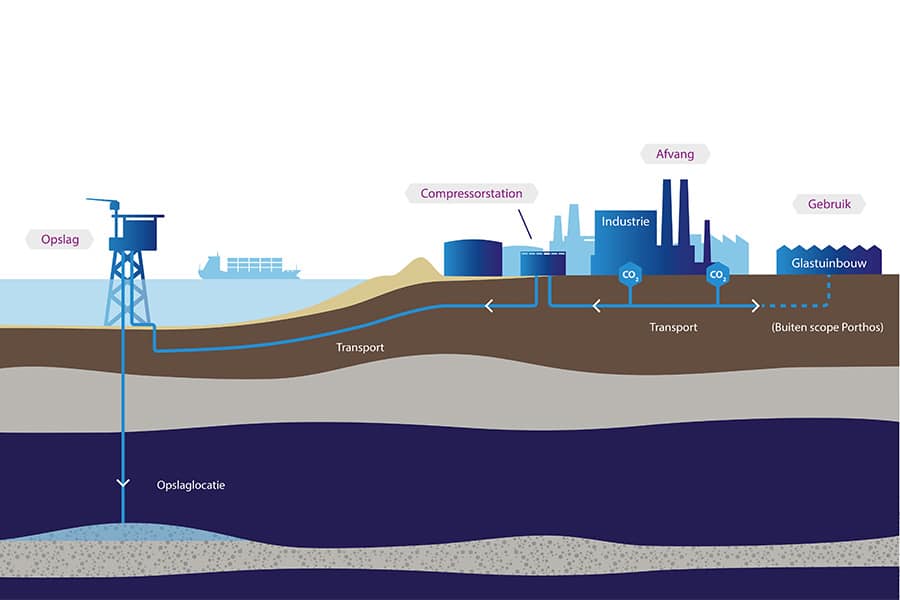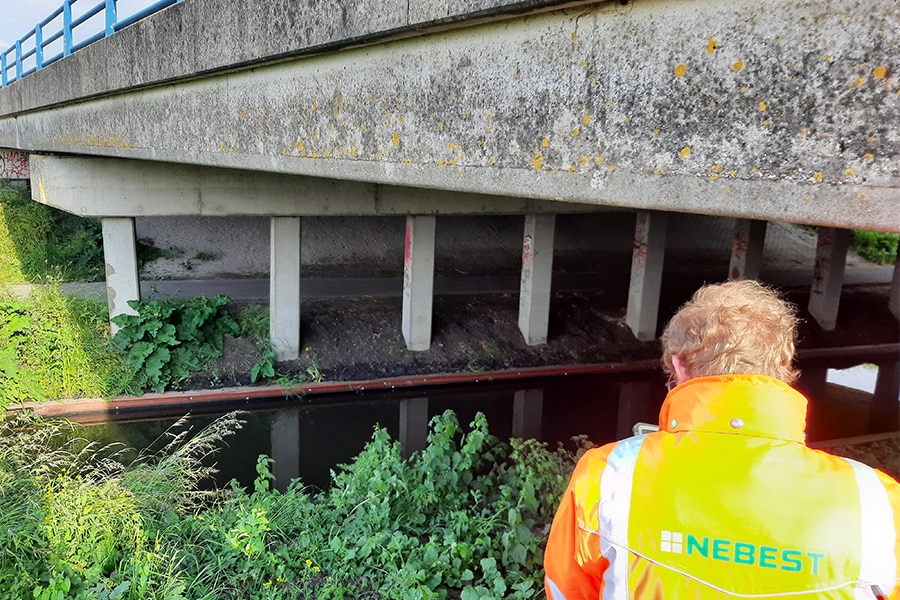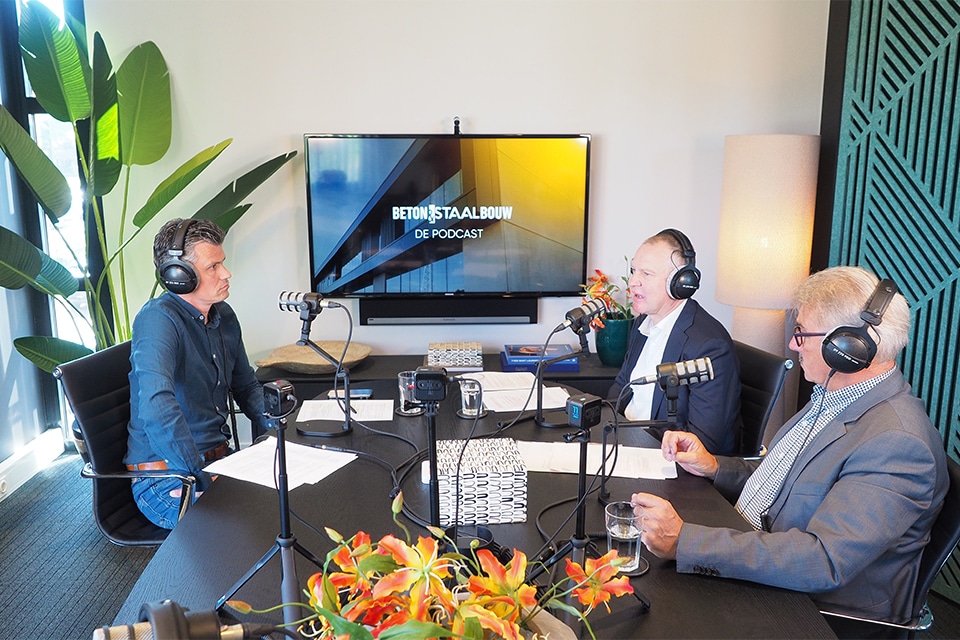
How do you get to 100% predictable infrastructure maintenance?
Not spending a single euro too much on infrastructure maintenance and being able to accurately predict the maintenance budget required for the coming years without being surprised by breakdowns, necessary unplanned maintenance or even structural failure. In short, to be fully in control as a manager by continuously maintaining the optimum balance between the performance, risks and costs of the area. 100% predictable maintenance is the ultimate scenario. In reality, however, it is impossible and will remain a utopia even with all future innovations. We are getting closer and closer, though. Iv-Groep has developed the DREAM method for this: Data-driven Risk-Based Enterprise Asset Management.

Interesting challenge
In the Netherlands there are 85,000 bridges and viaducts, 83,000 culverts, 2,400 kilometers of quays and 7,800 pumping stations. All civil infrastructure together is worth more than 300 billion euros. Currently, the annual cost of replacement is over 1 billion euros per year. These costs are expected to increase by a factor of 3 to 4 over the next 20 years. In 30 years, they are likely to rise to 4 to 6 billion euros per year. And that's on top of the costs of about 7 billion euros per year for maintaining existing infrastructure. This is according to the TNO report "Maintaining Civil Infrastructure, Preliminary National Forecast Replacement and Renovation Report" (dated April 29, 2021).
Considering that governments are increasingly having to cut back on (the maintenance of) physical infrastructure, we face an interesting challenge in the coming decades. A challenge that requires a smart(er) approach and innovations.

The DREAM Approach
The terms "Enterprise Asset Management" in DREAM denote the organization of maintenance of an organization's physical assets throughout the life cycle of each asset. Typical examples of these assets are bridges, tunnels, quays, locks, dams, pumping stations, inlets and outlets, storm surge barriers and (navigable) roads. A risk-based approach to maintenance attempts to prevent debacles with, for example, closed or collapsed bridges. To this end, the risk analysis methodology FMECA (Failure Mode, Effect and Criticality Analysis) is applied. The basis is an area-specific system decomposition, set up according to the structure and terminology of part 4 of the NEN 2767 standard for condition measurements. Subsequently, often together with the manager, each element or building component is analyzed for possible deviations from its intended function(s), including the possible causes and effects in terms of corporate values (such as safety, accessibility, costs, environment and image). Iv-Infra uses its own validated database of hundreds of possible failure mechanisms. This database has been fed over the past 15 years with risk analyses and inspections of infrastructure systems worldwide.
Criticality is then determined by the (semi-)quantitative magnitude of the risk of each of the failure mechanisms, which in turn is formed by the severity of the effects combined with the probability of occurrence. To estimate this probability of occurrence, available information on the year of foundation, historical use and (thus largely) loads to date, maintenance history, any past repairs, reinforcements or modifications, the theoretical progression of the failure mechanism over time, inspection results and the (probable) current condition of the component is used.
This is then translated into a probability density function for the failure moment of the specific failure mechanism via data analysis, expert estimates or by using a failure curve pre-programmed in DREAM for the expected failure moment, supplemented by a quantitative or pre-programmed estimate of the standard deviation. With this probability density function, combined with the effects in terms of the operating values, the risk profile of the asset as a function of time is determined. By placing this risk profile along the risk acceptance bar in accordance with an organization's business value matrix, the optimal maintenance timing can be determined for each asset. With a specific maintenance strategy, the performance of the asset is secured at the lowest possible cost with an acceptable risk profile.

Uncertainty trumps
100% predictable maintenance remains a utopia because the expected failure moment of an asset can never be determined with certainty. After all, we are uncertain about the current (structural) strength of an asset and can at best estimate the loads that have occurred. Even less can be said about future loads. We do not know the exact failure behavior over time and sometimes we do not know how old an asset is. The degree of uncertainty translates into a standard deviation around the expected moment of failure. The more uncertain we are, the wider the probability density function around the expected failure point and the higher the probability that the actual failure point will occur earlier than expected.
This is where the Data-driven aspect in DREAM becomes relevant. When uncertainty about the failure moment is caused by lack of knowledge about the loads or strength of an asset, it helps to collect as much relevant data as possible. This can be done by inspections and measuring and monitoring with sensors (vibrometers, pressure gauges, strain gauges, inclinometers, etc.). By processing the data with "smart" algorithms and then having specialists with domain knowledge interpret it, this data is converted into information about the assets, which can be used to more accurately estimate the expected moment of failure. Not yet with 100% predictability, of course, but it usually does lead to a lower risk profile, allowing maintenance to be postponed.
With DREAM, Iv-Infra offers data-driven and risk-driven tools for both a demonstrably optimal maintenance strategy with a view to performance, risks and costs, and for determining a demonstrably optimal strategy for inspecting, measuring and monitoring physical assets.



